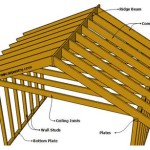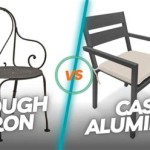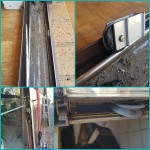How Much Does It Cost To Install a Stone Patio?
Installing a stone patio is a popular home improvement project that can significantly enhance outdoor living spaces. The cost of such a project is variable, influenced by a multitude of factors ranging from the type of stone selected to the complexity of the design and local labor rates. This article provides a detailed overview of the price drivers associated with stone patio installation, offering a comprehensive understanding of the potential investment involved.
The price of installing a stone patio can vary widely, often falling within a range of $10 to $50 per square foot. This broad range reflects the diverse options available in terms of materials, design complexity, and the geographic location of the project. Labor costs also play a significant role, and these can fluctuate depending on the experience level of the contractor and the prevailing rates in the area.
Homeowners must understand the various components that contribute to the overall cost to effectively budget and plan for a stone patio installation. Detailing the key elements helps establish realistic expectations and facilitates informed decision-making during the planning and execution phases.
Key Point 1: Stone Type and Material Costs
The selection of stone is the most substantial determinant of the overall project cost. Different types of stone possess varying price points, influenced by factors such as availability, durability, aesthetics, and the difficulty involved in quarrying and processing them. Some common and frequently used types of stone for patio installation include:
Flagstone: Flagstone is a popular choice due to its natural, irregular shapes and varied color palettes. It offers a rustic and aesthetically pleasing appearance. However, prices can range considerably depending on the specific type and thickness of the flagstone. Typically, flagstone prices range from $15 to $30 per square foot.
Pavers: Stone pavers are manufactured stones designed for uniform size and shape, simplifying the installation process and providing a more consistent appearance. Pavers are available in a variety of materials, including concrete, brick, and natural stone. Stone paver prices range from $8 to $25 per square foot.
Bluestone: Bluestone is a type of sandstone known for its characteristic blue-gray color. It is durable and visually appealing, making it a desirable choice for patios. Bluestone is commonly used in both irregular and cut shapes. The price for bluestone usually falls between $20 and $40 per square foot.
Slate: Slate is a fine-grained metamorphic rock that is known for its durability and distinctive layered appearance. It is a high-end option offering a sophisticated look. Slate prices typically range from $25 to $50 per square foot.
Granite: Granite is an extremely durable igneous rock that provides a luxurious and long-lasting patio surface. However, its price is generally higher than other stone options. Granite prices can range from $30 to $60 per square foot.
The cost of the stone itself extends beyond the per-square-foot price. Transportation costs must be factored in, especially if the stone is sourced from a distant location. Additionally, waste is inherent in any construction project, and an allowance of approximately 10-15% extra stone is typically recommended to accommodate cuts, breakage, and unforeseen circumstances.
Key Point 2: Site Preparation and Base Construction
Proper site preparation is crucial for ensuring the longevity and stability of a stone patio. A poorly prepared base can lead to uneven settling, cracking, and weed growth. The extent of site preparation required can vary depending on the existing soil conditions and the desired level of patio durability.
Typically, site preparation involves the following steps:
Excavation: Removing existing vegetation, topsoil, and any unstable material from the area to be paved is crucial to ensure a stable base. The depth of excavation will vary based on the soil composition and the intended patio use. Excavation costs can range from $2 to $5 per square foot.
Compaction: After excavation, the soil needs to be compacted to provide a firm foundation. This is usually achieved using a plate compactor or a roller. Compaction strengthens the soil and prevents settling. Compaction is usually bundled into the excavation cost but can be a separate charge.
Base Material Installation: A base of crushed gravel or compacted aggregate is laid over the compacted soil. This base provides drainage and prevents the stone from shifting. The thickness of the base layer is typically 4 to 6 inches. Base material costs range from $1 to $3 per square foot.
Leveling and Sand Bedding: A layer of sand is spread over the base material to create a level surface for the stones to rest on. This layer of sand also helps to provide cushioning and allows for minor adjustments during installation. Sand bedding costs approximately $0.50 to $1 per square foot.
The costs associated with site preparation can vary significantly depending on the complexity of the terrain and the presence of any existing structures or utilities. Addressing drainage issues can significantly increase the upfront cost potentially saving repair costs later. Removing large rocks or tree roots can also add to the overall expenses.
Key Point 3: Labor Costs and Installation Complexity
Labor costs constitute a substantial portion of the total expense associated with stone patio installation. These costs are influenced by factors such as the experience and skill of the contractor, the complexity of the design, and the geographic location of the project.
Generally, labor costs range from $5 to $20 per square foot, depending on the intricacy of the installation. A simple rectangular patio with uniform pavers will typically have lower labor costs compared to a complex design with irregular stones and intricate patterns.
Factors that influence labor costs include:
Stone Cutting: Irregularly shaped stones, such as flagstone, often require cutting to fit together properly. This increases the labor time and requires specialized tools. Contractors may charge more for projects involving significant stone cutting.
Pattern Complexity: Intricate patterns, such as herringbone or circular designs, demand more time and skill to install, resulting in higher labor costs. Simple, linear patterns are generally more cost-effective.
Accessibility: If the patio location is difficult to access, such as a backyard with limited access or a steep slope, contractors may charge more to account for the additional time and effort required to transport materials and equipment.
Jointing and Sealing: Filling the joints between the stones with sand or mortar and sealing the patio surface can add to the labor costs. These steps can help to prevent weed growth, stabilize the stones, and protect the surface from staining.
It is crucial to obtain multiple quotes from reputable contractors before making a decision. It is key to verify contractor licensing and insurance and to review past projects to assess the quality of their workmanship. A detailed contract outlining the scope of work, materials used, and payment schedule is essential to avoid misunderstandings and ensure a successful project.
Beyond the core components of stone, site preparation, and labor, several additional factors can impact the overall cost of a stone patio installation. Extras can include:
Permits: Depending on local regulations, a building permit may be required for patio installation. The cost of permits can vary widely depending on the location and the size of the patio.
Drainage: If the site has poor drainage, additional measures may be necessary to prevent water from pooling on the patio surface. Installing drainage systems can add to the overall cost.
Edging: Installing edging around the perimeter of the patio can help to contain the stones and prevent them from shifting. Edging materials can include plastic, metal, or stone.
Sealing: Sealing the patio surface can help to protect it from staining and weathering. Sealants are typically applied every 1 to 3 years.
Lighting and Landscaping: Adding lighting or landscaping around the patio can enhance its aesthetic appeal and functionality. These additions can significantly increase the overall project cost.
Planning and budgeting are crucial elements in the successful installation of a stone patio. By understanding the various factors that influence cost, homeowners can make informed decisions and achieve their desired outdoor living space while staying within their budget. Obtaining multiple quotes, clarifying the scope of work, and addressing potential challenges upfront will help ensure a smooth and cost-effective project.

How Much Does A Patio Cost Installation 2024 Landscaping Network

Average Flagstone Patio S In 2024 Forbes Home

How Much Does It Cost To Build A Paver Patio

Stone Patio Paving Costs Sol Vida Landscaping

Cost To Install A Patio 2024 Calculator

How Much Does It Cost To Install Patio Pavers In 2024 Paver House

Paver Cost Landscaping Network

How Much Does It Cost To Install Patio Pavers Whitehouse Landscaping

Value Vs Cost To Install A Paver Or Natural Stone Patio In Reading Lancaster Pa

How Much Does A Stone Patio Cost 2024 S








